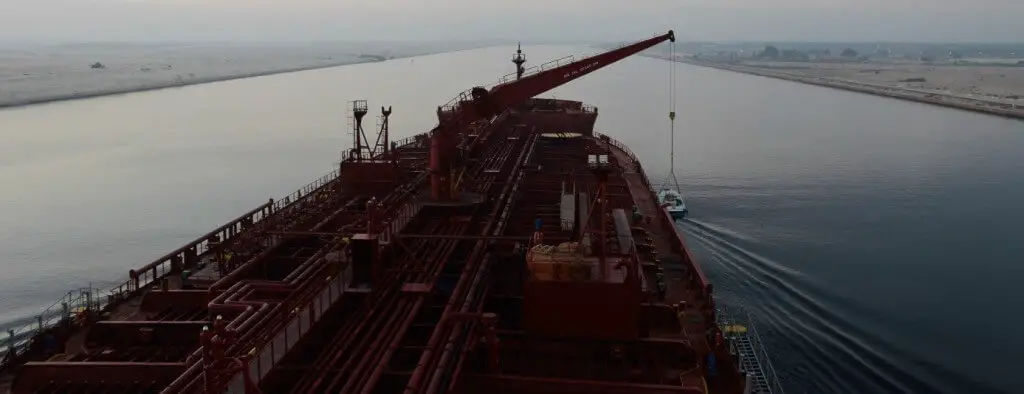Major ship size groups include:
Handy and Handymax
Traditionally the workhorses of the dry bulk market, the Handy and more recent Handymax types remain popular ships with less than 60,000 dwt. The Handymax sector operates in a large number of geographically dispersed global trades, mainly carrying grains and minor bulks including steel products, forest products and fertilizers. The vessels are well suited for small ports with length and draft restrictions and also lacking transhipment infrastructure. This category is also used to define small-sized oil tankers.
Panamax
Represents the largest acceptable size to transit the Panama Canal, which can be applied to both freighters and tankers; lengths are restricted to a maximum of 275 meters,
and widths to slightly more than 32 meter. The average size of such a ship is about 65,000 dwt. They mainly carry coal, grain and, to a lesser extent, minor bulks, including steel products, forest products and fertilizers.
PANAMAX SHIP TRANSITING PANAMA CANAL
Aframax
A tanker of standard size between 75,000 and 115,000 dwt. The largest tanker size in the AFRA (Average Freight Rate Assessment) tanker rate system. Aframax tankers are optimal for short- to medium-haul crude oil transportation. Aframax class tankers are largely used in the basins of the Black Sea, the North Sea, the Caribbean Sea, the South and East China Seas, and the Mediterranean. Non–OPEC exporting countries may require the use of tankers because the harbors and canals through which these countries export their oil are too small to accommodate the larger Suezmax or the larger still very large crude carriers and ultra-large crude carriers.

AFRAMAX OIL TANKER
Suezmax
This standard, which represents the limitations of the Suez Canal, has evolved. Before 1967, the Suez Canal could only accommodate tanker ships with a maximum of 80,000 dwt. The canal was closed between 1967 and 1975 because of the Israel – Arab conflict. Once it reopened in 1975, the Suezmax capacity went to 150,000 dwt. The Suez Canal can now accommodate all mammoth tankers in service on their ballast trips.
VESSEL TRANSITING SUEZ CANAL
VLCC
Very Large Crude Carriers, 150,000 to 320,00 dwt in size. They offer a good flexibility for using terminals since many can accommodate their draft. They are used in ports that have depth limitations, mainly around the Mediterranean, West Africa and the North Sea. They can be ballasted through the Suez Canal.
VLCC
ULCC
Ultra Large Crude Carriers, 300,000 to 550,000 dwt in size. Used for carrying crude oil on long-haul routes from the Persian Gulf to Europe, America and East Asia, via the Cape of Good Hope or the Strait of Malacca. The enormous size of these vessels requires custom built terminals.
JAHRE VIKING PULLED BY TUGS FOR BERTHING – ULCC

Leave a Reply